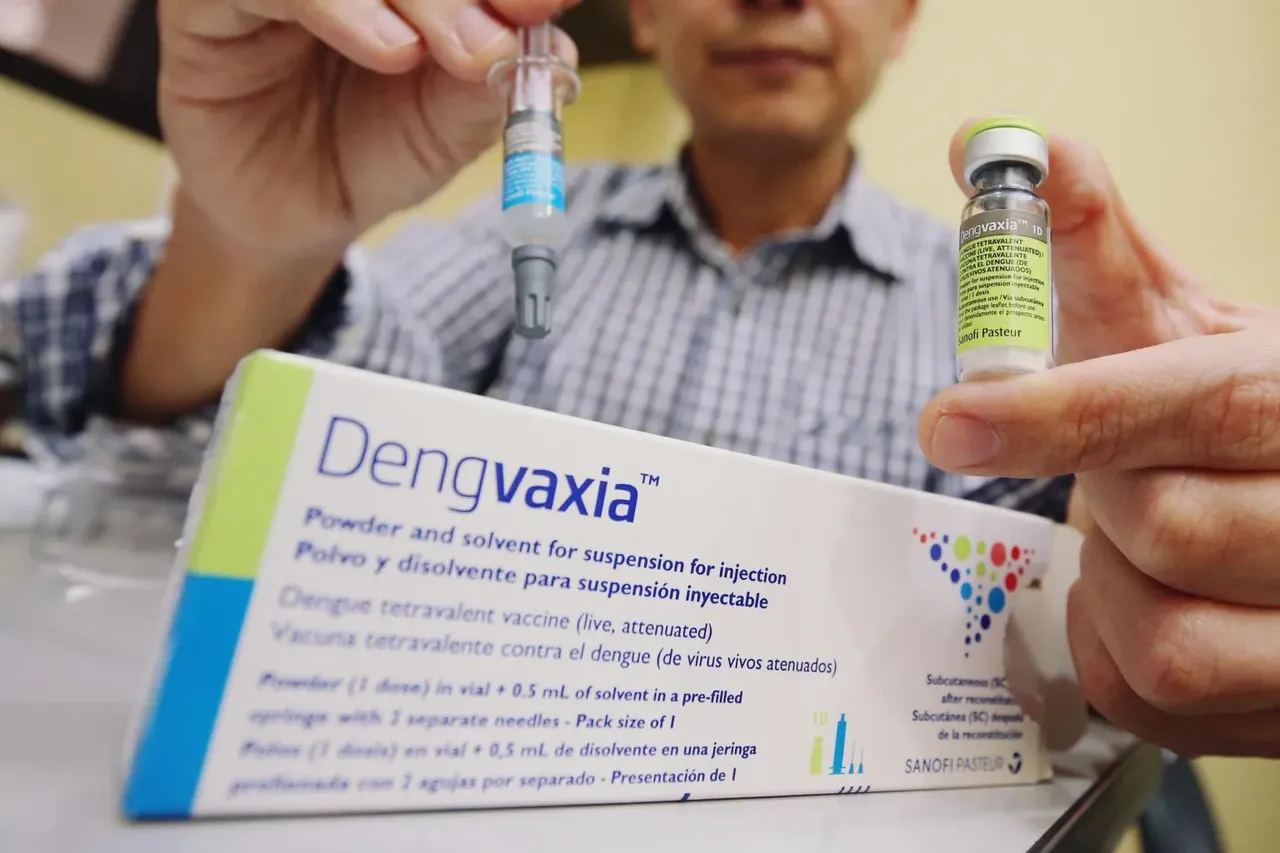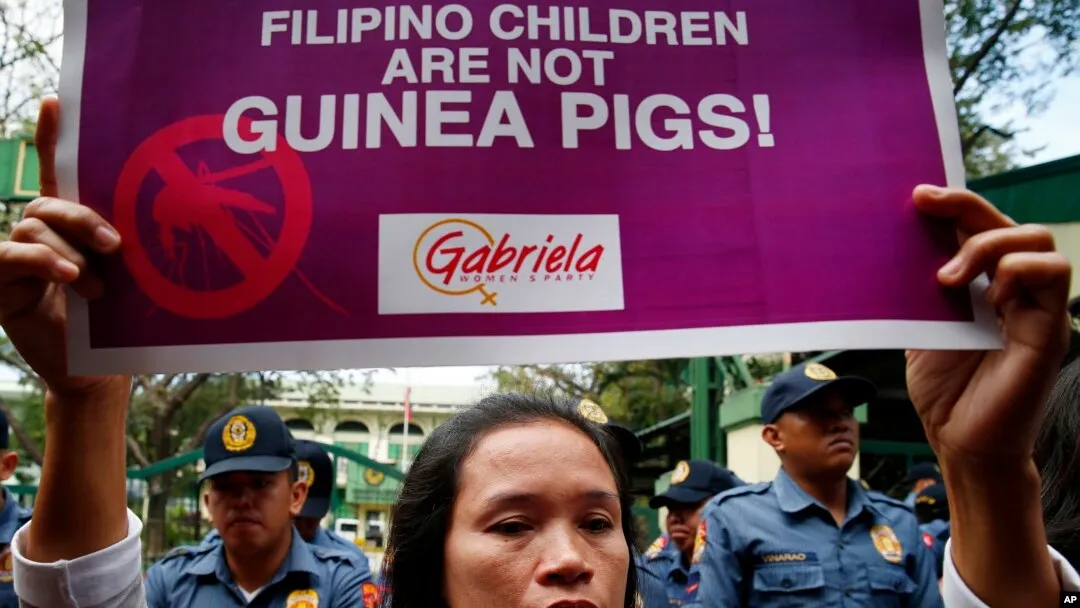
Dengue is the most feared disease in the Philippines having experienced outbreaks for several years. In 2014 alone, the Philippines ranked 4th among the Southeast Asians countries that had all the four serotypes present.
Although the disease is seasonal, it became a year-occurrence in the country and affected 117,065 children in 2014. In 2015, the Philippines recorded 40,000 deaths. With these numbers, the disease was already a serious national problem that needed to be addressed.
The thousands of children affected signified the magnitude of the problem, calling for a government action. Because of this, health practitioners were eager to have a vaccine to address the Dengue outbreak.
Then cabinet member for the Department of Health, Secretary Janette Garin, felt she needed to act about the Dengue emergency in the country.
Since the matter was already a public health concern, she needed to do something. Given the probability of the illness being transferred to and acquired by the general public, the intention was not to protect the children alone but the whole Philippine society.
Secretary Garin was not just concerned with the physical effects of Dengue on the children, but also with the emotional, psychological, social and mental effects of the disease to the children, their families, the different communities. Ultimately, she was worried about the effects of Dengue on the quality of life of the Filipinos.
Having complied with the technical procedures necessary for the implementation of the Dengvaxia, the first ever licensed vaccine for Dengue, she was confident that a mass vaccination was the perfect solution. So, in December of 2015, then President Simeon Benigno “Noynoy” Aquino closed a deal with Sanofi, a pharmaceutical company, for Philippines’ purchase of DENGVAXIA.

The objective of that purchase was to save millions of children from acquiring Dengue by injecting them with 3 doses of vaccine. Apparently, this involved a huge amount of money. Worse, there were so many who died after having the vaccine.
The Dengvaxia issue happened at a time when the 2016 Philippine national election was fast approaching and the use and effect of social media was also at its peak.
During this time, Former President Simeon Benigno “Noynoy” Aquino was faced with several national issues too and this Dengvaxia was another blow to his administration as everything went viral on social media.
Since Sec. Garin was believed to be an ally of the Former President Aquino, the issue was attributed to her personally and collectively to the Liberal Party, a political party believed to be under the control of the Aquinos. It also cannot be denied that given the successive issues that plagued the country, the Filipinos were already frustrated.
Dengvaxia issue was one turning point for the Filipinos to lose trust to the Aquino administration. Hence, the overwhelming result of the 2016 Philippine national election favoring Duterte gave the Filipino people hope that justice shall be given to those who were victimized by the Dengvaxia vaccine.
Upon the assumption of Rodrigo Roa Duterte in 2016 as the newly elected president of the Philippines, a national crisis on public mistrust on Dengvaxia emerged.
Since one of Dutete’s advocacy was against corruption, all other politicians, whether for or against Duterte, rode on to his advocacy and made Dengvaxia a corruption issue. However, the post of Dr. Antonio Dans, an epidemiologist, was also a major contributor to all these fiascos. He warned people about the possible effects of Dengvaxia.
Although what could have prompted him to post was Sanofi’s public announcement, it was misinterpreted by the netizens, without trying to verify what really happened and whether or not the deaths he had been talking about were actually related to Dengvaxia.
It is difficult to say who really could have faulted for the deaths that happened unless a thorough investigation would really be done. Besides, I find the deaths no longer the issue now.
The issue now is whether introduction of new vaccines to the Philippine rural communities, where infectious diseases are high, would still be acceptable to the majority, after the tragic death incidents brought about by Dengvaxia.
Sec. Garin and the Liberal party were already perceived and had been judged to have handled the issue poorly, making the public mad. Social media was used to pin them down more. Before they could defend themselves, the unverified and shared information cannot be corrected anymore.
It seems to be human nature especially among the less educated to immediately believe what has been relayed first to them.
This was a very complex problem faced by the Aquino administration under the leadership of Sec. Janette Garin in the Department of Health. Being in the realm of public service, efforts must be made to heal the nation from the wounds of the Dengvaxia issue.

If I were the secretary of the Department of Health then, I would do the following:
Encourage the Liberal Party to create a fact finding team and conduct a separate investigation on how the vaccine was really introduced.
As to the statement that ninety percent (90%) of Filipino children were critical, were the vaccines given to the identified 90%? My assumption is 90% refers to the general Filipino children, meaning they were all over the country, but vaccines could have been given just to particular areas like the National Capital Region (NC) and Luzon, as complaints were high in said regions.
The fact finding team can verify this concern.
Invite Dr. Antonio Dans for a dialogue to clarify his statement on social media. What did he really mean with the “600,000” children who received Dengvaxia vaccine?
For me, it gave a lot of interpretation to the public and only when he clarifies what he meant would put an end to the anger and fear that has been going on.
My assumption is that the public could have taken it negatively and it was already difficult for him to control the outrage of the people. Now, for everybody’s peace of mind and to save everybody from wrong information shared, I would encourage Dr. Dans to speak in public whether the 600,000 meant:
a.) 600,000 children died;
b.) 600,000 children are at risk of dying ;
c.) once a child receives Dengvaxia chances are, he/ she will die or what.
His clarification will put an end to different speculations and change the thinking of the public about the effects of the vaccine.
Encourage the World Health Organization (WHO) and Sanofi to deliver an official statement as to the safety and efficacy of the vaccine.
Since WHO is a credible health institution worldwide and Sanofi was its manufacturer, statements from their officials would convince the public not to resist continued use of Dengvaxia and other vaccines.
Major Lessons Learned:
Public servants should not be impulsive when deciding on matters involving several stakeholders, especially if what is at risk is the general welfare of the public.
Believing everything in social media is a sign of gullibility. Not everything we see and read on social media is true. All information must be validated.
Sharing of public information is crucial and must always be coupled with a sense of responsibility.